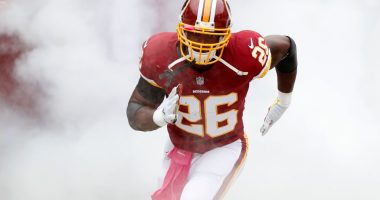FILM-MAKER and photographer Anton Corbijn’s Squaring The Circle (The Story Of Hipgnosis) showcases the work of Storm Thorgerson and Aubrey “Po” Powell, the album art design geniuses.
As Hipgnosis, the pair were responsible for some of the most striking covers of all time, including Pink Floyd’s The Dark Side Of The Moon and others by Led Zeppelin, Paul McCartney, Black Sabbath and AC/DC.

19

19
Storm and Po never played a note, but they forever changed how we look at music.
Who else would fly to Hawaii to shoot a sheep on a psychiatrist’s couch in front of big blue waves for a 10cc album?
The film includes new interviews with McCartney, Floyd’s Roger Waters, David Gilmour and Nick Mason, and Led Zep’s Jimmy Page and Robert Plant.
It’s available in cinemas and on demand now, and on DVD/Blu-ray from Home Entertainment on August 7.
Here in his own words, Hipgnosis co-founder Po, 76, picks nine great album covers and tells their fascinating back stories . . .

19
1970: Pink Floyd: Atom Heart Mother

19
THIS is a perfect example of an anti-cover which became iconic.
We came up with the idea of a cow, plain and simple, with no title of the band, no name of the record.
Pink Floyd saw the picture and embraced it. When it came out, it stood out so well among all the other album covers in record stores that it became an instant hit.
It still stands out as something really bizarre. A cow representing a rock band? Very strange.
1971: The Nice: Elegy

19
STORM, my Hipgnosis partner, had a dream of a red football stretching across the desert.
I painted it on A4 paper in watercolours and presented it to Keith Emerson, leader of The Nice. He loved the idea.
The record company was not so sure, especially when we told them we had to go to the Sahara Desert to shoot it.
In retrospect, it was the best thing we ever did and a tipping point for Hipgnosis.
After it, we specialised in that kind of surrealist work.
1973: Pink Floyd: The Dark Side of the Moon

19

19
PINK Floyd wanted something graphic, not a surrealist photo design.
One day, I was looking through a book about light refraction and Storm had the idea of a prism.
We presented it to the band at Abbey Road Studios and they immediately went: “That’s it.
“That’s the one that represents us.”
This image has become iconic, not only for Pink Floyd but also for Hipgnosis.
You still see it everywhere . . . it’s very flattering.
1975: Paul McCartney & Wings: Venus And Mars

19

19
I HAD a call from Paul to go to LA and discuss an album cover with him.
He and his wife Linda had the idea of putting two balls on a billiard table and making it very graphic to look at.
I shot the image with Linda and later went out to the Mojave Desert, with Paul and his band Wings, to shoot the interior image.
Hats off to Paul for coming up with such an interesting concept.
As he said: “It’s all balls anyway.”
1975: Led Zeppelin: Presence
PRESENCE is about power, the power of Led Zeppelin.
In the 1970s, they were the biggest band in the world.
They had a huge “presence” and were absolutely magnetic.
So we wanted to design something symbolic of a power source – a battery that you could not live without.
We came up with a black object to be used in everyday life. We set it in the Fifties, which was a big sci-fi period. Jimmy Page loved it.
1976: Black Sabbath: Technical Ecstasy

19
WHEN Black Sabbath gave us the brief with the title Technical Ecstasy, we immediately thought of a love relationship between robots.
Given the current interest in AI, this seems a precursor to the modern age.
You see two robots passing on an escalator, formed with photographic imagery and illustration.
Consequently, we created a love affair between two mediums . . . real technical ecstasy!
1976: AC/DC: Dirty Deeds Done Dirt Cheap

19
ANGUS and Malcolm Young came to Hipgnosis Studio when they were starting out.
I honestly thought these guys were never going to make it.
But I went to Los Angeles and, given the title, I shot a sleazy motel on Sunset Strip, and then put the various characters in front of it as a collage.
When the band saw it, they accepted it straight away – but I’m not sure they really understood it.
Anyway, the album went on to sell 6million copies. So what do I know about music?
I only know about visuals.
1977: Yes: Going For The One

19
I WAS on tour with Paul McCartney in 1976 and came across these buildings in Century City, Los Angeles, which I photographed for a book.
When Yes (the Jon Anderson, Steve Howe, Chris Squire, Rick Wakeman and Alan White line-up) asked us to do an album cover, I remembered the photographs.
We decided to put a naked man swimming up through the buildings to symbolise Going For The One. The record company was upset.
They thought the cover looked rather gay, which was an offensive attitude in those days.
But we insisted and the band insisted that the naked man remained.
I think it’s a very successful cover representing Yes in the prog-rock universe.
1979: Led Zeppelin: In Through The Out Door

19

19
THIS album was a return to the blues for Led Zeppelin, a look back at where they came from musically.
So I decided to find a juke joint that might suit the record.
I went through the Caribbean and finished up in New Orleans, where I photographed an old absinthe bar.
I showed Jimmy Page and Robert Plant the idea and then actually built a set identical to the interior of the bar.
We then made six album covers, shot from six different views of people inside. Peter Grant (Zeppelin manager) said to me: “The problem with your album covers, Po, is that you’re so expensive. I could sell their records in a brown paper bag.”


I said: “Well, why don’t you then?” So we actually put the six pictures in a brown paper bag and sold the album like that.
And Peter was absolutely right. It sold phenomenally well, regardless of the cover. Jimmy loved it.

19

19

19

19
!function(f,b,e,v,n,t,s){if(f.fbq)return;n=f.fbq=function(){n.callMethod?
n.callMethod.apply(n,arguments):n.queue.push(arguments)};if(!f._fbq)f._fbq=n;
n.push=n;n.loaded=!0;n.version=’2.0′;n.queue=[];t=b.createElement(e);t.async=!0;
t.src=v;s=b.getElementsByTagName(e)[0];s.parentNode.insertBefore(t,s)}(window,
document,’script’,’
fbq(‘init’, ‘752905198150451’);
fbq(‘track’, “PageView”);









